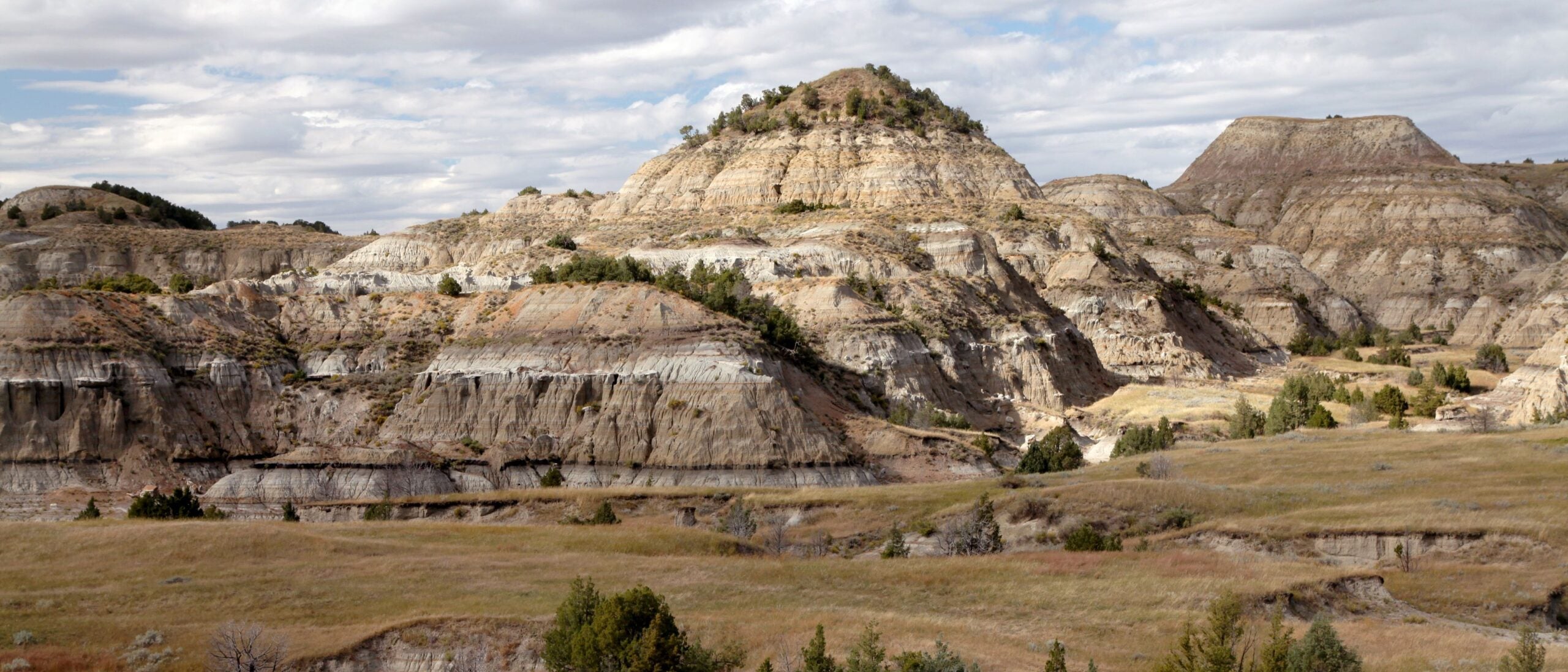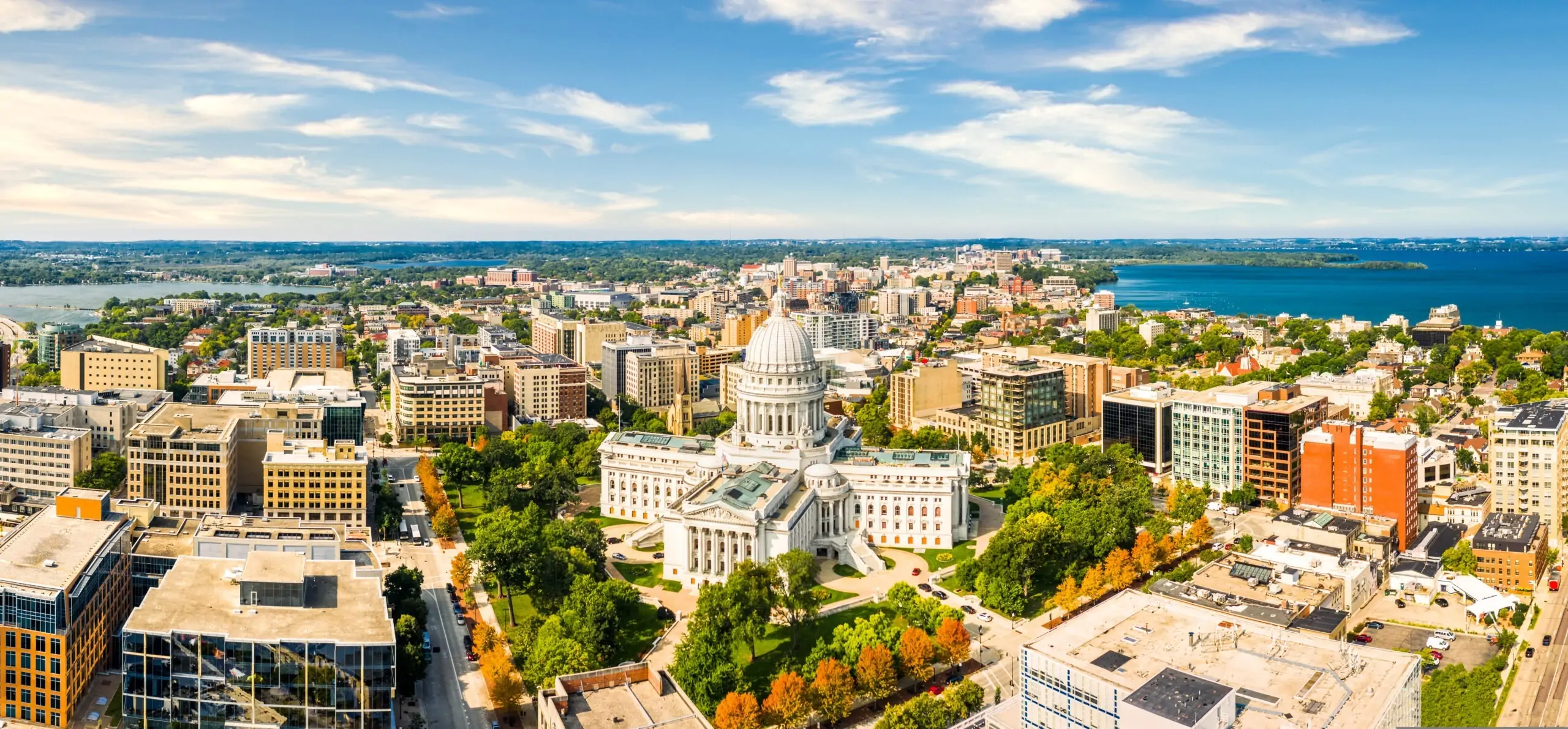Download the PDF Version of Our Report
A 2023 recession has yet to manifest, but there’s enough uncertainty in the market to leave many Americans wondering which states are in the best position to withstand a recession should one arrive later this year or next.
Turns out, you may want to pack a winter coat and move toward the interior, specifically the Upper Midwest. NationalBusinessCapital.com’s inaugural report, “Best States to Recover From a Recession in 2023,” found the Upper Midwest, including North Dakota (ranked 1st), Minnesota (5th, tied), Wisconsin (5th, tied), and South Dakota (8th), to be the region most ready to withstand a recession.
These cold but tough states are politically a mix of red and blue and tend to strike a good balance when it comes to cost of living, economic output, job opportunities, prudent budgeting, and effective safety nets. Like a phoenix reborn, many of these states weathered the storm of the Great Recession and emerged with newfound strength and resilience.
If the Upper Midwest isn’t your cup of tea, several other states outside the region also made the Top 10. Those with a pioneer spirit can find affordable homes and healthy economic temperaments in Alaska (2nd), while those who rather stay on the opposite coast can look to Massachusetts’s (7th) wealth and effective UI safety net to get them through rough waters. Those who like a good underdog story can expect some relative stability in West Virginia, despite the state’s well-publicized and ongoing economic hardships.
Our methodology is explained in more detail below, but here are the basic metrics we explored for this report:
- State reserve balances
- State GDP per capita
- Debt-to-income ratio
- Unemployment insurance coverage
- Unemployment rate
- Housing affordability
- Effective tax rates
- Great Recession GDP change
Key Findings
- Migration Boom States Generally Performed Poorly. Many of the states with low-to-no income tax and relatively low cost of housing (including Florida (39th), Tennessee (46th), and North Carolina (48th)) – and those having benefited from looser COVID-19 policies – saw housing prices escalate due to increased demand from new residents relocating from states with higher taxes and salaries.
- Outward Migration Didn’t Help. While recent population losers, Massachusetts (7th) and West Virginia (10th), did make the top 10, many states that saw accelerated out-migration over the last few years, like New York (17th), California (34th), and Illinois (23rd), put in a mediocre performance, indicating that they may not have fully found their footing in the aftermath of the pandemic.
- Northern Midwest States Are Among the Strongest. North Dakota (1st), Minnesota (5th, tied), Wisconsin (5th, tied), and South Dakota (8th) expose a geographic trend within the top 10 rankings. While not perfect 100/100 scores, these states strike an economic balance that won’t topple easily, even in a recession.
- Wyoming Is Swimming In Cash. Wyoming (4th) struggled in the Great Recession, but recent investments in the nation’s least populous state could paint a very different picture this time around. With reserves in excess of its expenditures, Wyoming can run for almost a full year on rainy-day funds.
- Unemployment Is Historically Low. This report considered current unemployment rates for each state and ranked them relative to one another, but it bears mentioning that unemployment was low across the board. The state with the weakest employment numbers, Nevada (43rd), had an unemployment rate of 5.4%. The states with the strongest rates, Nebraska (3rd) and New Hampshire (25th), had unemployment figures of 1.9%. Most states had an unemployment rate under 4%.
- Red And Blue States Both Made The Top 10. There’s more than one way to be recession-resistant. Red states with lean budgeting and low costs of living appear in our Top 10, along with blue states with more comprehensive social spending.
Top 10 States to Recover From a Recession in 2023
1. North Dakota
Overall Score: 81.8
You may not be building your vacation home in the Peace Garden State, but there is no better state for your recession bunker. From its strong energy-based economy (3rd in GPD per capita) to its low unemployment rate (4th) and ample reserves (6th), North Dakota is capable of weathering most economic storms. In fact, no state came through the Great Recession better than North Dakota (1st), which saw nearly 20% GDP growth in that time. If there are any chinks in North Dakota’s armor, it’s that its cost of living, as represented by housing affordability (18th) and debt-to-income ratio (19th), is unspectacular.
2. Alaska
Overall Score: 74.2
If you were hoping for a warmer alternative to our No. 1 state, you might be disappointed to see Alaska come in second. Nevertheless, the Last Frontier has a lot going for it when it comes to resisting the effects of a recession. Nearly half of all Alaskan households can afford the median home (1st), and the state has the lowest effective tax burden in the country (1st). Add in ample government reserves (3rd), strong GDP per capita (7th), and the Alaska Permanent Fund, and a little midnight sun doesn’t sound too bad. Just make sure you’ve got a stable job, as the unemployment rate has been trending on the high side (35th).
3. Nebraska
Overall Score: 72.2
If you need a job, you shouldn’t have a hard time finding one in Nebraska, which currently has an unemployment rate of under 2% (1st). Cornhuskers also enjoy a low household debt-to-income ratio (2nd) and government reserves to spare (5th), both of which should go a long way on a rainy day. Just make sure you hold onto your job and build up your savings, as unemployment insurance coverage in Nebraska is relatively low (41st).
4. Wyoming
Overall Score: 69.9
If you prefer more rugged terrain and the ability of your state’s government to run nearly a full year without any outside assistance (1st in government reserves), look no further than the Equality State. Other high points for Wyoming include a low effective tax burden (2nd) and respectable economic output for its sparse population (12th). Before you pack your bags for Jackson Hole, however, it’s worth noting that Wyoming struggled during the Great Recession (38th) and currently has a slightly higher-than-average unemployment rate (29th).
5. Minnesota
Overall Score: 69.0
Those looking for a more urban locale may want to check out Minnesota. The North Star State ranks in the top 50% on all but one of our metrics, making it a very well-rounded choice for beating the recession blues. The one dark spot is its effective tax burden (39th), but when you’ve got as strong a safety net as Minnesota has (2nd in UI coverage), you may be getting your money’s worth.
5. Wisconsin
Overall Score: 69.0
Sliding next door, we find Wisconsin tied with Minnesota for 5th place. Despite its similar climate and score, the Badger State has a more pronounced set of strengths and weaknesses than its neighbor to the west. Wisconsin features excellent government reserves (4th) and a manageable household debt-to-income ratio (8th), as well as low unemployment (9th). Housing costs could become an issue for stressed budgets (34th), however.
7. Massachusetts
Overall Score: 59.8
The only Eastern coastal state to make the Top 10, Massachusetts looks to be able to brute force its way through a recession thanks to its powerful economic output (2nd in GDP per capita) and generous unemployment insurance system (3rd in UI coverage). Indeed, The Bay State came through the Great Recession in decent shape (8th). Just don’t expect to be able to find affordable housing unless you’re rolling in dough (50th).
8. South Dakota
Overall Score: 59.6
Not to be left behind by the other Dakota, the Mount Rushmore State slides into our Top 10 at No. 8. While not as well-rounded as its northern namesake, South Dakota boasts a lower unemployment rate (1st), lower household debt burdens (10th), and lower effective tax burdens (4th). You’ll want to make sure you can hold onto your job during rough times, however, as South Dakota’s UI coverage has a lot of holes in it (46th).
9. Indiana
Overall Score: 59.3
When it comes to individual metrics, Indiana tends to fall in the middle of the pack. However, Hoosiers do enjoy a manageable household debt (4th) and a relatively low effective tax burden (13th), which could translate to less stress from overhead during a recession. On the other hand, Indiana did take a heavy blow during the Great Recession, with GDP down 2.6% by the end (39th).
10. West Virginia
Overall Score: 59.0
Bringing up the rear may be the most surprising state (49th in GDP per capita) to see on our Top 10 list, but remember that which does not boom also tends not to bust. If history is any indication (9th in GDP recovery from the Great Recession), that may still hold true for the Mountain State. West Virginia has some of the lowest housing costs in the country (2nd) and respectable levels of household debt (17th) and UI coverage (16th).
Bottom 10 States to Recover From a Recession in 2023
40. Kentucky & Virginia
Overall Score: 38.6
These neighboring states tied for 40th. Kentucky struggles with a troublesome combination of relatively high unemployment (42nd) and poor UI coverage (43rd). While Virginia’s unemployment rate is better (20th), it has even worse UI coverage (47th) and high levels of household debt (42nd).
42. Washington
Overall Score: 38.3
Despite strong economic output (4th), Washington’s budget is running on razor-thin margins (50th), the household debt burden is high (45th), and employment levels are poor relative to most other states (39th).
43. Nevada
Overall Score: 38.1
While most other states have seen their employment recover from the COVID crisis, Nevada’s tourism-dependent economy has lagged behind (50th). This is in keeping with its history of busting during economic crises (50th in Great Recession recovery).
44. South Carolina
Overall Score: 38.0
South Carolina is often considered a more affordable alternative to Florida, but recent migration booms have cut into its cost of living advantage (20th in housing affordability). GDP per capita (46th), UI coverage (37th), and past recession performance (44th) work against it.
45. Louisiana
Overall Score: 37.4
Cheap housing (5th) and Great Recession performance (4th) aren’t quite enough to make up for Louisiana’s low reserves (47th), relatively high unemployment (35th), low UI coverage (39th), and weak per capita GDP (47th).
46. Tennessee
Overall Score: 36.9
Tennesse has a low tax burden (3rd) and affordable housing (10th) but is highly vulnerable in most of our other metrics.
47. Hawaii
Overall Score: 35.8
Hawaiian households are heavily debt-burdened (47th), probably in no small part due to the cost of housing on the islands (48th).
48. North Carolina
Overall Score: 33.0
North Carolina has benefited from recent booms, but like other Southeastern states, this has reduced some traditional advantages in housing affordability (23rd). Household debt levels (39th) and lack of an effective UI safety net could become an issue (49th).
49. Mississippi
Overall Score: 32.3
Aside from relatively affordable housing (12th) and a moderate effective tax burden (20th), Mississippi ranks in the bottom half of states in other metrics, most notably GDP per capita (50th).
50. Arizona
Overall Score: 26.1
Arizona’s combination of high household debt (43rd), poor UI coverage (42nd), low housing affordability (37th), and dismal performance in the Great Recession (48th) landed Arizona at the bottom of our list.
COMPLETE RANKING OF ALL 50 STATES
For the complete look at how all 50 states performed in our ranking, check out the table below.
Methodology
To create our rankings, we selected eight metrics to understand each state’s recession performance. Within each metric, the lowest scoring state was given a rank of 0, while the highest ranking was given a rank of 100. Each metric was multiplied by a selected weight, then added together to create an overall score for each state.
Here are the eight metrics we chose, along with the percentage used to calculate the weight of each metric:
- State reserve balances (17%): This metric represents the percentage of the state government’s monetary reserves relative to that state’s government spending. States with higher reserves can operate longer in an emergency without additional funding. Data is sourced from the Pew Charitable Trusts.
- State GDP per capita (17%): This metric represents the per capita gross domestic product of each state. It represents the strength of the state’s economic output relative to its population size. Data is sourced from the Bureau of Economic Analysis and the Census Bureau.
- Debt-to-income ratio (17%): This metric represents the ratio of household debt within the state relative to the median household income of that state. Households with less debt will be more resilient in the face of economic stress. Calculated using data from the Federal Reserve Bank of New York and Statista.
- Unemployment insurance coverage (17%): This metric is the percentage of unemployed people covered by the state’s unemployment insurance programs at time of sampling - a measure of the effectiveness of the state’s safety net. Data was sourced from the US Department of Labor.
- Unemployment rate (10%): To get a sense of the state’s current economic health, we’re using the most recent data from the Bureau of Labor Statistics.
- Housing affordability (10%): This metric represents the percentage of households that can currently afford the median home price within that state, a measure of that state’s cost of living. Data comes from the National Association of Home Builders.
- Effective tax rates (6%): This metric is taken from the Tax Foundation, which calculates effective tax burden by looking at state and local taxes paid by a state’s residents and dividing it by that state’s share of net national product. It includes factors like sales, income, excise taxes, estate taxes, and others. It represents an aggregate burden on the state, though it does not consider returns via spending.
- Great Recession GDP change (3%): We included this metric to understand how the state performed during the last major recession between Q4 of 2007 and Q4 of 2010. Data for this calculation was pulled from the Bureau of Economic Analysis data.
Data for this report was pulled from the Pew Charitable Trusts, the US Bureau of Economic Analysis, the US Census Bureau, the Federal Reserve Bank of New York, Statista, the US Department of Labor, the US Bureau of Labor Statistics, the National Association of Home Builders, and Tax-Rates.org.
Accelerate Your Success
Seize the opportunity to grow your business and gain access to the capital you need.















